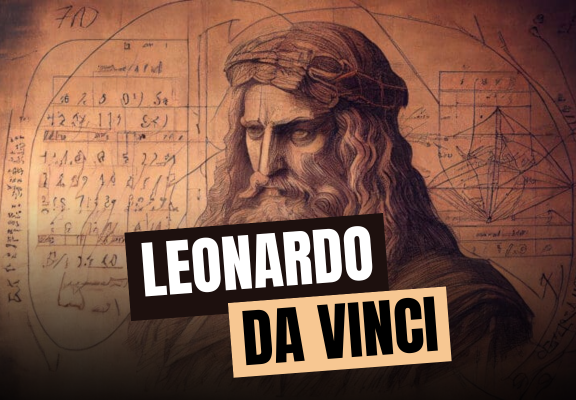Leonardo da Vinci : Bridging Art, Science, and Nature


Leonardo da Vinci, who is frequently thought of as the epitome of the Renaissance man, exhibited an insatiable curiosity that extended beyond the confines of any particular field of study. In spite of the fact that he is most known for his creative masterpieces, such as the Mona Lisa and The Last Supper, Leonardo was also profoundly fascinated by science and the natural world. In this article, we will begin on a trip to investigate the complex relationship that exists between the artistic pursuits of Leonardo da Vinci and his unquenchable hunger for scientific study.
There is no better example of Leonardo’s multidisciplinary approach to comprehending the natural world than the Vitruvian Man, which is considered to be one of his most famous masterpieces. Leonardo’s thorough study of human proportions and anatomy in this sketch, which is based on the works of the Roman architect Vitruvius, reveals his profound regard for the harmony and symmetry that may be found in nature. Through the creation of the Vitruvian Man, Leonardo da Vinci endeavored to discover the mysteries surrounding the human form and its connection to the universe.
The scientific observations and experiments that Leonardo conducted are documented in his codices, which are notebooks that provide insight into his work. There are many natural phenomena that are investigated in the Codex Leicester, which was called for its owner in the 17th century. These natural phenomena include the movement of celestial bodies, the development of fossils, and the flow of water. Leonardo diligently documented his observations by means of comprehensive diagrams, sketches, and notes. As a result, he paved the path for breakthroughs in a variety of subjects, including anatomy, astronomy, and others.

It was Leonardo da Vinci’s obsession with flight and engineering that prompted him to conceive of ground-breaking inventions such as flying machines, parachutes, and armored vehicles. His concepts for flying contraptions that foreshadowed contemporary aviation technology were motivated by his anatomical studies of birds and his detailed observations of aerodynamics both of which he researched in great detail. Leonardo da Vinci’s forward-thinking ideas lay the framework for future developments in engineering and aeronautics, despite the fact that many of his innovations were never realized during his lifetime.
Leonardo da Vinci imbued the painting with multiple layers of symbolism and scientific research, despite the fact that the Mona Lisa is renowned for its mysterious grin and enduring beauty. Leonardo did an excellent job of depicting the interconnectedness of nature and humans, from the ethereal scenery that was in the background to the subtle gradations of light and shadow that were on the face of the subject. The Mona Lisa is a representation of Leonardo da Vinci’s conviction that art and science are inextricably linked, and it encourages viewers to ponder the secrets of existence.

Pic: Mona Lisa

Pic: Flying Machine

Pic: The Vitruvian Man
The intense curiosity and unlimited imagination of Leonardo da Vinci continue to inspire wonder and adoration even centuries after he passed away. Through his unrelenting quest of knowledge and his extraordinary artistic aptitude, he was able to transcend the limitations of his time and provide the groundwork for contemporary scientific investigation. As we dive deeper into Leonardo’s fascination with science and nature, we come to have a more profound appreciation for the significant impact that his visionary contributions have had on the world of art, science, and invention.